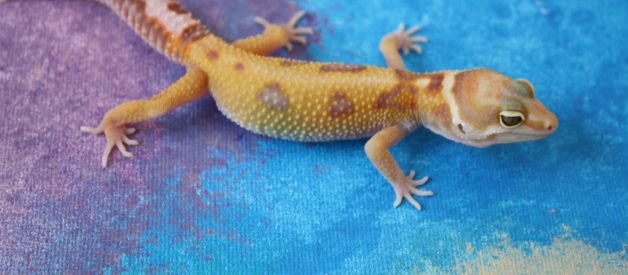So you want a pet reptile, but you?re not sure which one to choose. Luckily, you?re here to learn, and I?m here to help you in the right direction.
Because only certain reptiles are available at big name pet stores, we?ll stick to those options to make things a bit easier for you. As always, we support small business and recommend that you buy your pets from good, honest breeders, but for your first reptile we understand you may not know where to find one.
For many hobbyists, their first reptile serves as a teacher to help them understand reptiles as a whole. For this reason, it?s important to start with something relatively easy to care for and forgiving of mistakes. Some animals at pet stores, such as chameleons, while beautiful, can be very difficult to care for without ample experience.
Here are some examples of the best beginner reptiles to own.
1) Leopard Gecko
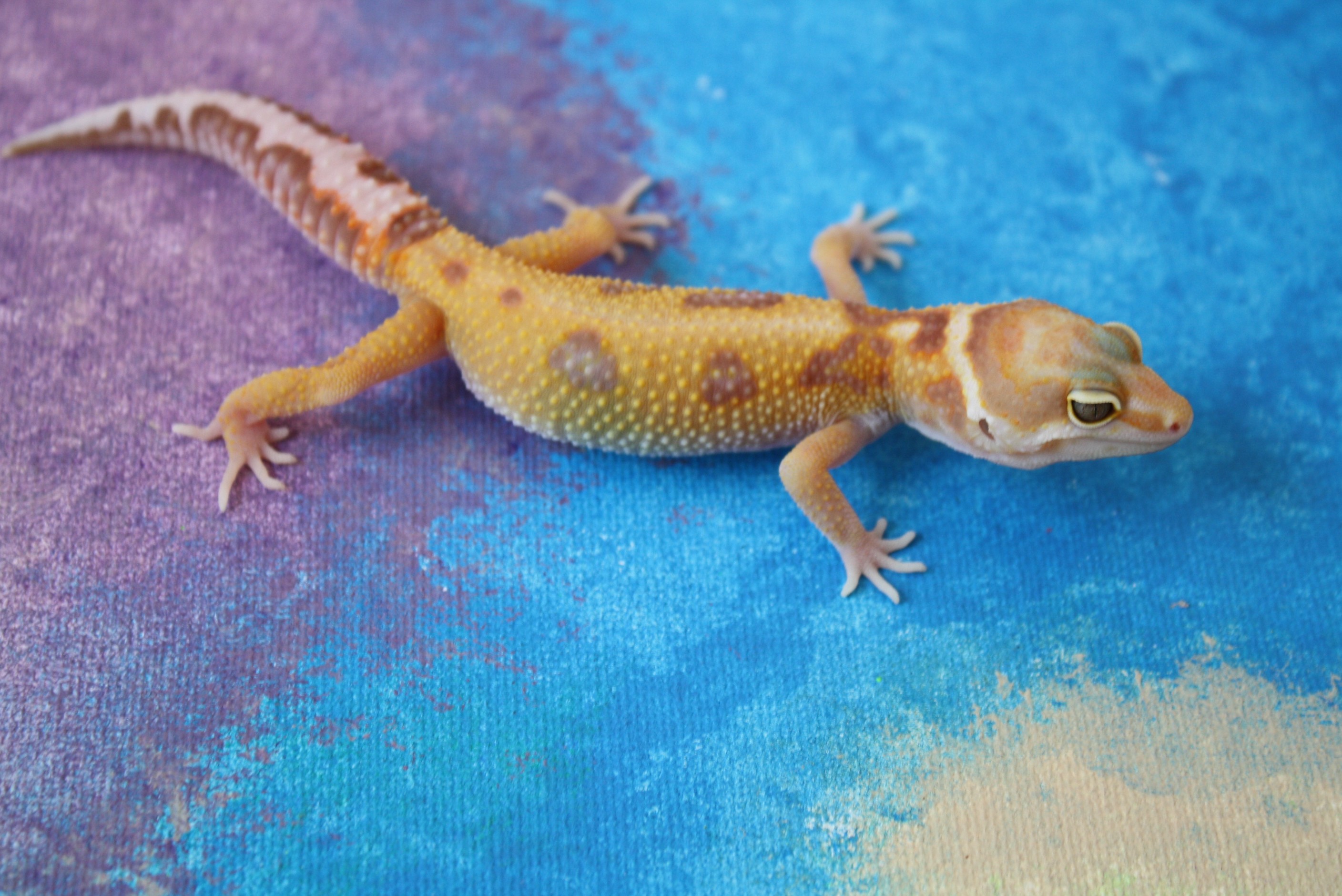
These cute little creatures are the darlings of the lizard world, with their smiling faces and big, bright eyes. A leopard gecko is a perfect place to start with reptiles. These little guys are easy to set up, easy to feed, and only require a heat mat for warmth.
With a diet limited to bugs, you only need to keep a container of mealworms and some quality calcium powder in the fridge for them. You can easily keep a leopard gecko in a 20-gallon long tank for the entirety of its life. They will need two hides; one on the cool side of their tank, and one on the warm side. Also include a humid hide in the middle or on the cool side to help them get pesky skin off when they are shedding.
One of the biggest beginner misconceptions about leopard geckos is that they need a heat lamp to thrive. This is absolutely not true, as these are nocturnal geckos and don?t benefit from heat lamps. For this reason, we highly recommend a good quality heat pad to give your gecko ?belly heat?, or heat to help them digest their food properly.
One more time for those of you in the back; don?t give your leopard gecko a heat lamp without also having belly heat available. This is a huge mistake I see beginners make, and their reptile?s health likely suffers because of it.
2) Bearded Dragon
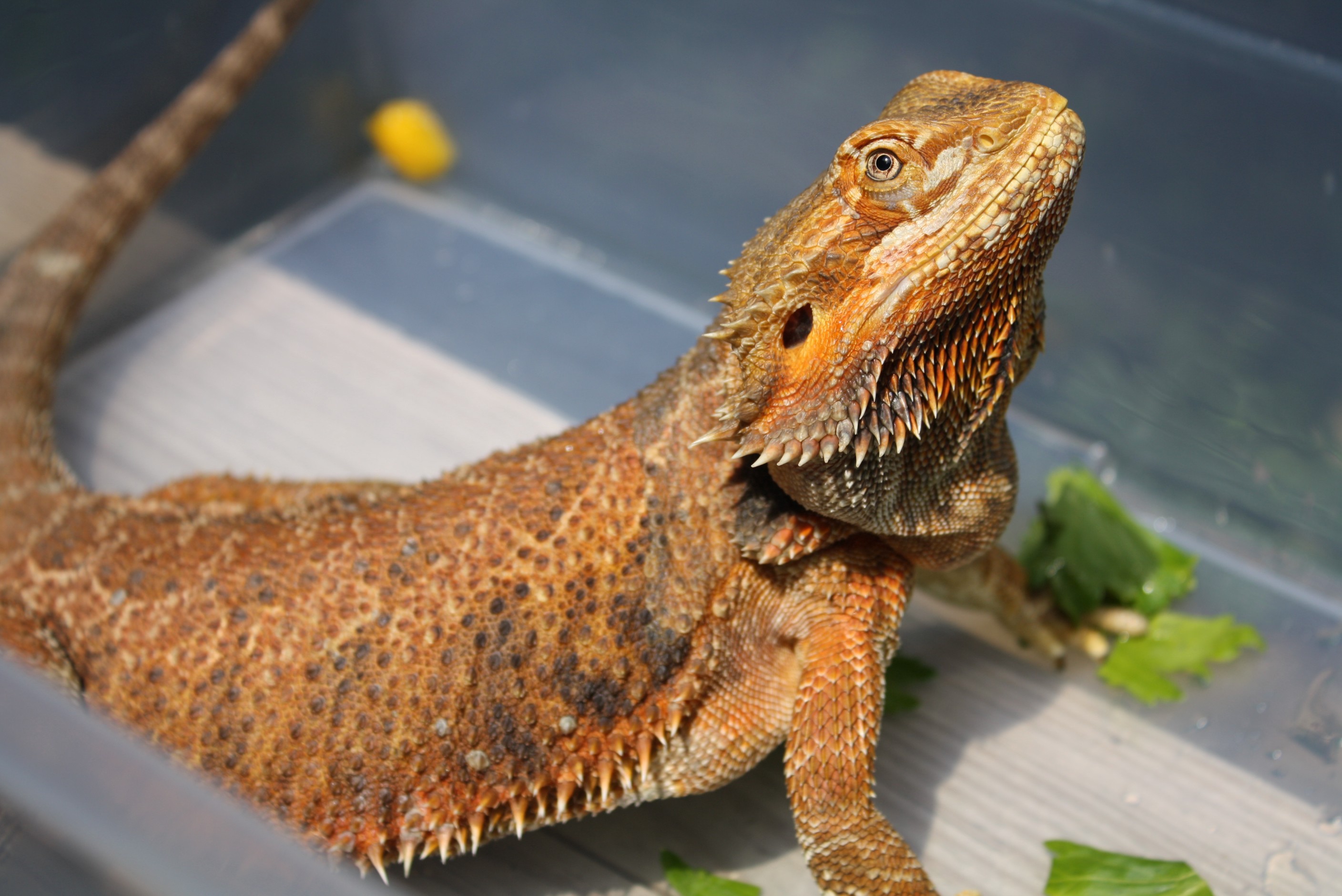
Bearded dragons are a fantastic beginner reptile if you are willing to put a little extra time and money into your pet. These animals tend to grow into a very laid-back temperament, but may be a bit standoffish as babies and skittish as young adults. Proper handling will help with this, though.
Bearded dragons, or ?beardies? as some call them, will need at least a 40-gallon breeder tank to live in, which will fit them as adults for their lifetime in most cases. However, because these are somewhat active animals, bigger can be better for adults. These animals will use the space when given, often running around and checking out their surroundings.
Beardies need a heat lamp as well as a good UVB reptile lamp. This is ESSENTIAL. If you only have one type of lamp, the dragon will likely have stunted growth and may develop Metabolic Bone Disease. You can keep these lights on a timer so that they have a day/night cycle of about 12 hours each.
Fruit and veggies are also a must with bearded dragons, as well as a variety of insects. There are lists available of dragon-safe foods, and you should definitely check them out before buying produce for your dragon. Sprinkle veggies with some calcium powder every few feedings, and your dragon will be good to go.
One of the biggest misconceptions about beardies is that they need to be on calcium sand. This is absolutely not true, as calcium sand can bind together when ingested and kill your reptile. Dragons can do well on a variety of different subtrates. Play sand can work, but it easily collects bacteria which can lead to infections. We recommend choosing a good reptile-friendly bark subtrate.
3) Ball Python
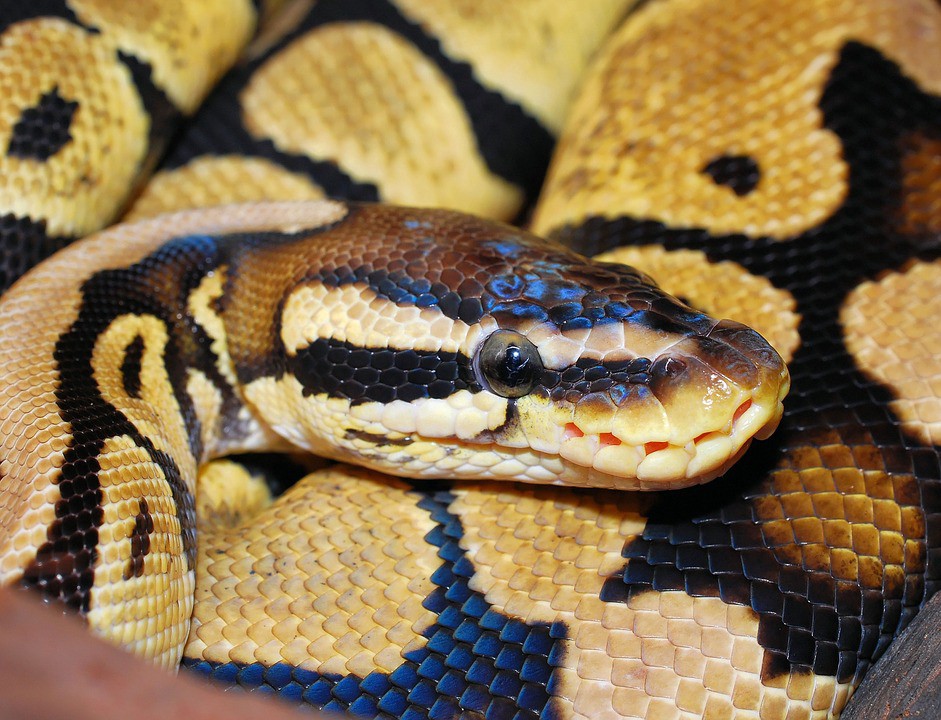
There are two paths that most reptile hobbyists will choose from when they are first getting started; snakes or lizards. Snakes are perfectly fine beginner reptiles, and can be a lot of fun to watch grow.
I added the ball python into this article with hesitation. They are readily available from pet stores and require very simple care, but they can in some cases be picky with food which can be hard to deal with for a new reptile owner. If that?s something you don?t want to potentially deal with, skip to #4.
Ball pythons require very basic care. They need a 40-gallon tank as an adult, but as babies will do just fine in a 20-gallon. You?ll need a hide with a heat pad (not a lamp, remember, belly heat!) and a bowl with fresh water. Also make sure to include a humid hide, and monitor your snake?s humidity levels. Around 55% humidity will likely be ideal.
The more places you can give your snake to hide out in, the happier it will be. These animals don?t get much larger than 3 or 4 feet long, but they will explore a larger environment if given one.
As mentioned before, one of the biggest beginner misconceptions about ball pythons is that they are easy to feed, and will take food on schedule. Your ball python may be a picky eater, and you may need to go through a few mice before they eat. This is the main drawback of keeping a ball python as a beginner pet, but if you give your snake a good environment and proper care, they are more likely to eat when you try to feed them. Your ball python may never be a picky eaterm and I have personally never owned a picky ball python, but it is possible yours will be.
4) King Snake
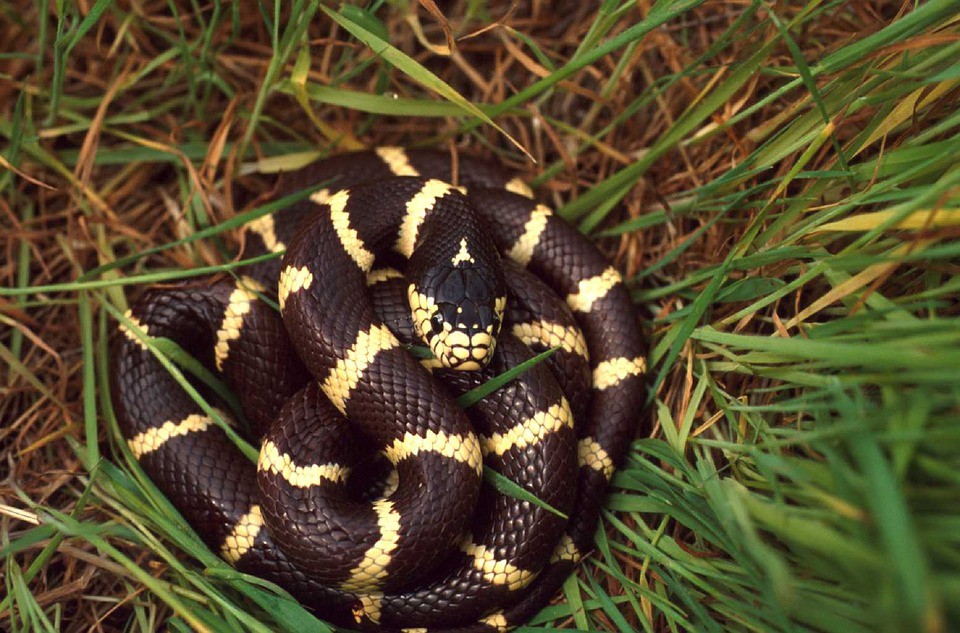
King snakes are great beginner snakes as well, and come in a variety of species that are good as pets. These snakes can be kept in a small enclosure when they are young, but may grow up to be 4?5 feet long, or bigger. For this reason, you should probably get a nice roomy enclosure for your king snake when it starts to get larger, as they are active and will use the space.
Needing a larger enclosure may seem like a downside for a beginner, but having a snake as active as a king will mean your snake will be a joy to watch when exploring its environment. The more places it has to burrow and climb, the more truly fascinating it becomes to observe.
King snakes are generally good eaters, and will usually take frozen mice without a problem. They are also known to climb, so make sure you have snake clamps or a sturdy weight on the top of your tank so they don?t escape. Or, even better, you can buy an enclosure specifically made for snakes that they can?t push their way out of.
One of the biggest misconceptions about king snakes is that they stay small, which can be true in some cases, but they have the capability to grow large. It?s important to keep this in mind when you buy a baby, as they may need a big enclosure as adults. Their care remains simple, they just need some extra room to slither around.

5) Crested Gecko
Crested Geckos are hugely popular these days, as they are very easy to care for and easy to breed, for those looking to get into that aspect of the hobby. One of the most appealing things about crested geckos is that they can be fed a meal powder called crested gecko diet, or CGD for short.
These geckos don?t need much space as babies and will do much better in a small enclosure, as they can have troubles finding their food in a tank too big. It is also important to remember that these are climbing geckos, so a smaller enclosure can prevent a baby gecko from falling and getting injured.
One of the most important rules to keeping a crested gecko is that you always make sure there is some humidity in the cage. For this reason, screen-top cages don?t work so well, as they don?t hold humidity.
There are TWO really big beginner misconceptions about crested geckos, one being that they need to have their tank SOAKED in water. In reality, crested geckos need high humidity but they also need to be able to dry out. If a gecko can?t get dry, it will likely develop a bacterial infection, which can be difficult and expensive to treat.
The other misconception is that crested geckos only need to eat CGD for their entire lives. While some have success with this model of feeding, it?s a much better idea to supplement your gecko?s diet with some type of feeder insect. You can also occasionally dust these insects in calcium powder to maintain bone health in your new pet. Crested geckos may be known as fruit-eating geckos, but once you see the look on their face when presented with a juicy worm, you?ll understand why I suggest feeding insects as well. 🙂
Hopefully you?ve found the perfect starter pet while reading through these great options. You can follow me and check out my other reptile-related articles at TheReptileBlog.com.
